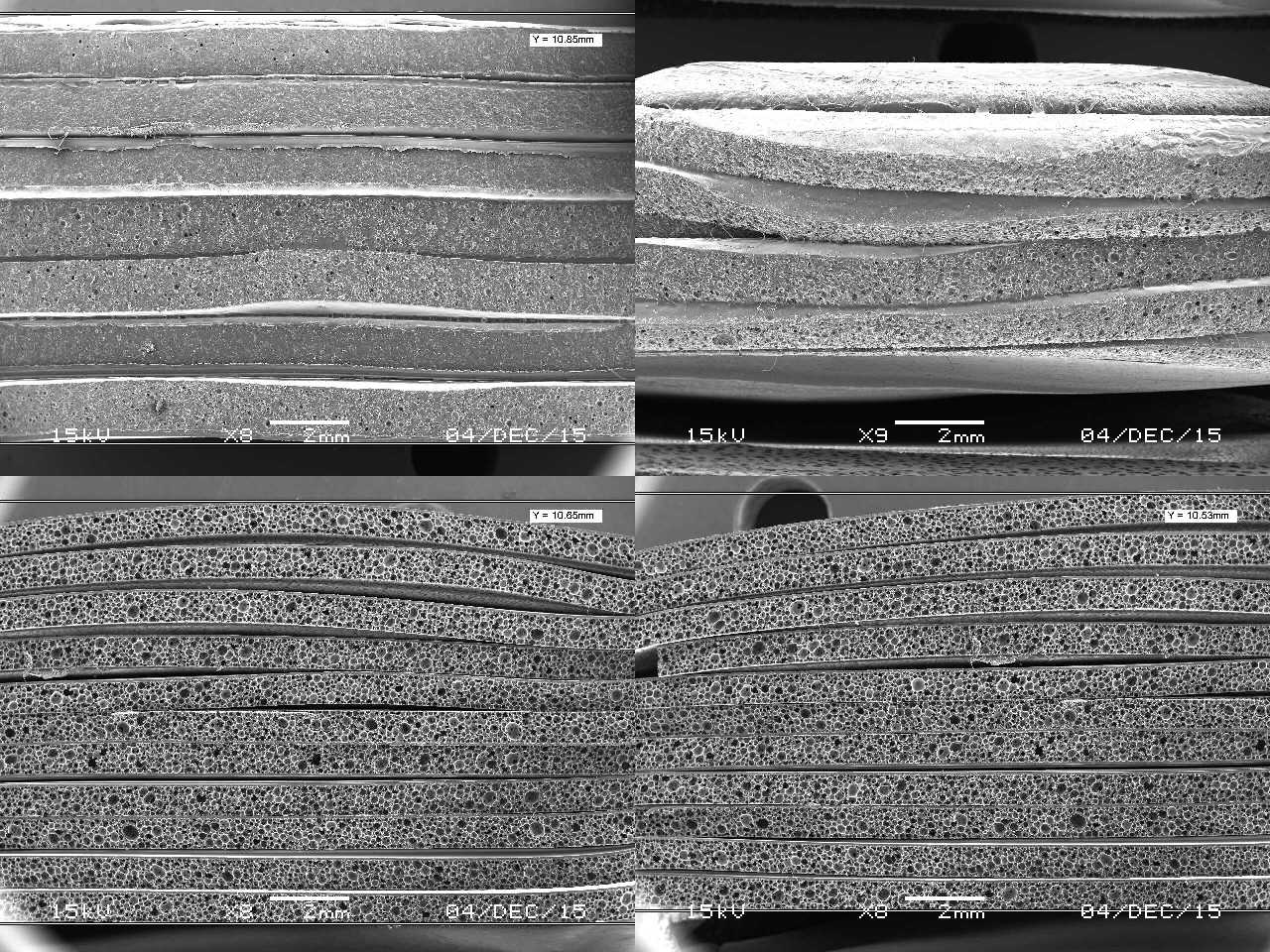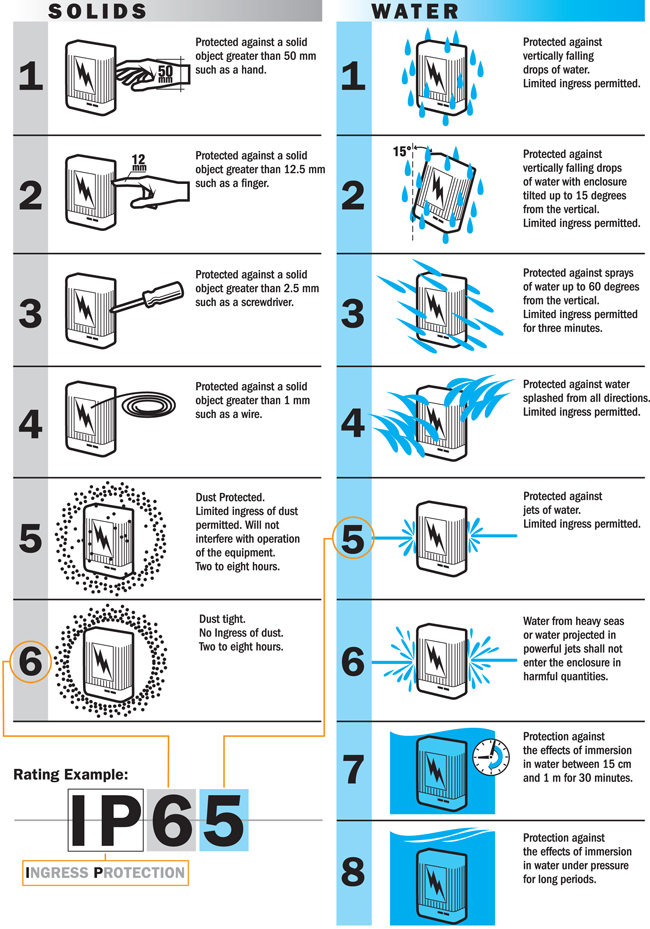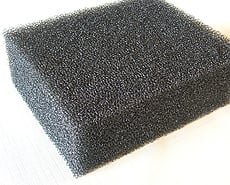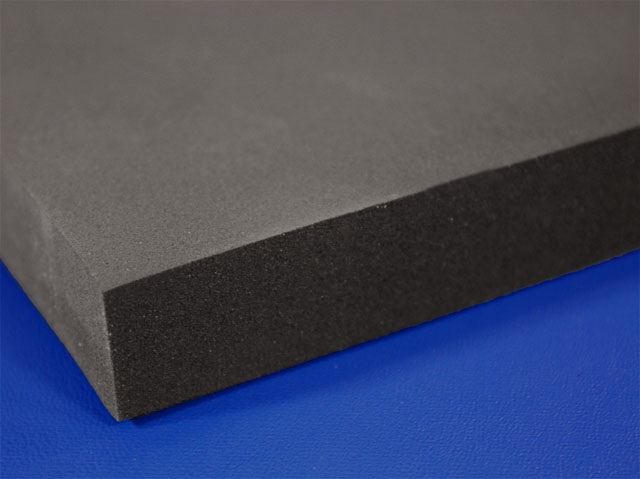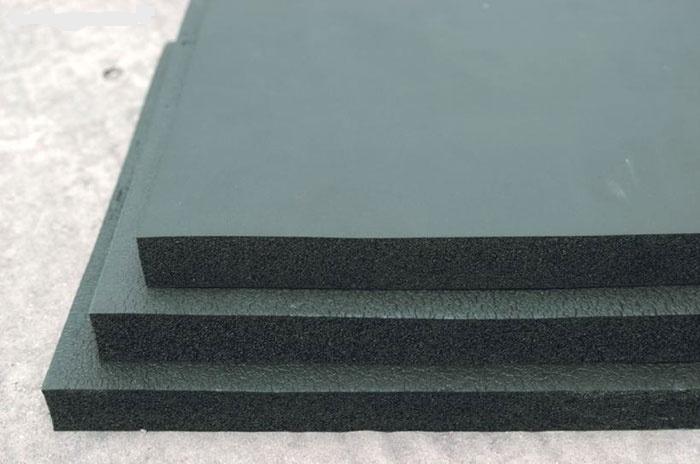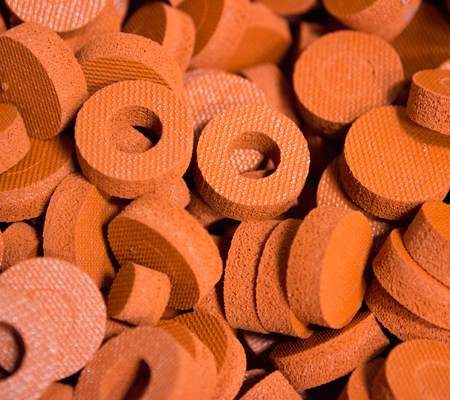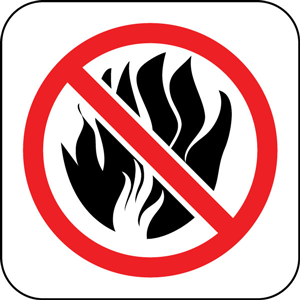Rogers Corporation’s PORON® 40V0 foam gives engineers a thinner, softer, and UL 94 compliant solution for gap filling and cushioning.
Unlike standard polyurethane foams, PORON 40V0 combines reliable flame resistance with enhanced compressibility in slimmer grades, making it ideal for space-constrained designs. It also meets strict environmental standards and minimizes contamination risks in critical applications.
Read More
Topics:
Thermal Management,
Foams,
Manufacturing,
PORON,
EV,
Battery,
Material selection,
Flame Barrier,
Automotive,
Sustainable Materials,
Rogers Corporation,
Data Center
Gaskets and seals can be manufactured in a number of different ways, but which is the best form for your application? In our blog, "An Engineer's Guide: 6 Key Questions for Gasket Fabrication", we discussed a number of different processes that could be used to cut your custom gasket or seal like rotary die cutting, laser cutting, waterjet cutting, and more.
This Enclosure Institute™ content from Marian and Rogers Corporation focuses on the difference between die-cut foam gaskets and three other sealing methods: o-rings, cure-in-place (CIP), and foam-in-place (FIP) gaskets.
Check out a summary of our content below or read the full article on Rogers’ website.
Enroll in The Enclosure Institute™ to advance your sealing design expertise.
*Disclaimer: The Enclosure Institute™ is a free educational resource created by Marian, Inc. and Rogers Corporation to help engineers navigate enclosure sealing with expert guidance.
Read More
Topics:
Foams,
Manufacturing,
BISCO Silicone,
PORON,
Material selection,
Die Cutting,
Automated Assembly,
Gasket,
Assembly,
Enclosure Institute,
Seals,
Enclosures,
Rogers Corporation
Selecting the right fabrication process for custom seals and gaskets starts with answering a few critical design-for-manufacturing (DFM) questions. By addressing these factors upfront, design engineers can avoid costly redesigns, speed up production, and ensure that their parts meet application requirements. At Marian, our engineers use these questions (and more) to create a fabrication plan tailored to each project.
This guide is presented by the Enclosure Institute™. For a deeper dive, explore the extended blog on the Rogers website, Top 8 Best Practices You Need to Know for Enclosure Die-Cut Gaskets, along with the video below hosted by Marian's own Phil Taylor and Jimmy Budd.
In these resources, you'll learn how starting with the right gasket design can optimize geometry to balance sealing force, fasteners, and load distribution. You'll also see why selecting manufacturing methods that align with production scale is critical for efficiency. Assembly features such as pull-tabs, locating holes, and specialized adhesives help streamline installation and minimize errors. Finally, packaging and delivery strategies play an often-overlooked role in protecting gasket integrity while making assembly faster and more reliable.
*Disclaimer: The Enclosure Institute™ is a free educational resource created by Marian, Inc. and Rogers Corporation to help engineers navigate enclosure sealing with expert guidance.
Read More
Topics:
Foams,
Manufacturing,
BISCO Silicone,
PORON,
Material selection,
Die Cutting,
Automated Assembly,
Gasket,
Assembly,
Enclosure Institute,
Seals,
Enclosures,
Rogers Corporation
A seal’s true value isn’t in how it looks on day one, but in whether it still protects your enclosure years later under heat, moisture, and mechanical stress. This Enclosure Institute™ article breaks down five core tests engineers can use to validate long-term gasket reliability: compression set, stress relaxation, thermal cycling, chemical resistance, and IP ingress protection.
Check out the extended blog on the Rogers website, How To Validate Enclosure Seal Reliability Through 5 Tests, and the video below.
*Disclaimer: The Enclosure Institute™ is a free educational resource created by Marian, Inc. and Rogers Corporation to help engineers navigate enclosure sealing with expert guidance.
Read More
Topics:
Foams,
IP Rating,
BISCO Silicone,
CFD,
PORON,
Compression Set,
Material selection,
Die Cutting,
Ingress Protection,
Gasket,
Enclosure Institute,
Seals,
Enclosures,
Rogers Corporation,
Material Testing
Designing a dependable enclosure seal isn’t just about picking or designing a gasket, it’s about how that gasket behaves under compression, for the planned life of the device (hours, weeks, months, days, years, etc.), within your hardware’s mechanical limits. The latest article from the Enclosure Institute™ highlights four key factors that matter most: gap spacing, compression force deflection (CFD), material compressibility, and gasket width.
Check out the extended blog on the Rogers website, The Mechanics of Enclosure Seal Design: Gap Spacing, CFD, and Compressibility, and the video below.
*Disclaimer: The Enclosure Institute™ is a free educational resource created by Marian, Inc. and Rogers Corporation to help engineers navigate enclosure sealing with expert guidance.
Read More
Topics:
Foams,
BISCO Silicone,
CFD,
PORON,
Material selection,
Die Cutting,
Gasket,
PSA,
Enclosure Institute,
Seals,
Enclosures,
Rogers Corporation
Understanding how different foams degrade is critical to designing gaskets that deliver optimal performance for their intended lifespan in any application. Learn what “long-term” reliability means in real-world environments and how polymer degradation mechanisms impact sealing materials.
In this Enclosure Institute™ blog, Marian and Rogers Corporation explore the key factors contributing to foam material degradation, providing engineers with insights to design durable components that maintain reliable performance throughout the product’s operational life.
Check out the extended blog on the Rogers website, Expert Tips for Preventing Polymer Degradation in Enclosure Applications, and the video below.
*Disclaimer: The Enclosure Institute™ is a free educational resource created by Marian, Inc. and Rogers Corporation to help engineers navigate enclosure sealing with expert guidance.
Read More
Topics:
Foams,
BISCO Silicone,
PORON,
Material selection,
Die Cutting,
Gasket,
PSA,
Enclosure Institute,
Seals,
Enclosures,
Rogers Corporation
Material selection related to seal performance is highly application specific. When choosing a sealing material, it's important to first understand if your application will be used in a static or dynamic environment. This ensures the appropriate materials are being considered for a gasket that maximizes enclosure reliability while also preventing premature failure.
In this Enclosure Institute™ blog, Marian and Rogers Corporation break down the differences between a static and dynamic seal, the design implications, and the key material properties that matter most.
Check out the blog on the Rogers website, Everything You Need to Know About Static vs Dynamic Seals in Enclosures, and the video below. The video also dives a little deeper into open cell and closed cell materials, their performance characteristics, and the various testing methods to verify those characteristics.
*Disclaimer: The Enclosure Institute™ is a free educational resource created by Marian, Inc. and Rogers Corporation to help engineers navigate enclosure sealing with expert guidance.
Read More
Topics:
Foams,
BISCO Silicone,
PORON,
Material selection,
Die Cutting,
Gasket,
PSA,
Enclosure Institute,
Seals,
Enclosures,
Rogers Corporation
Not all sealing failures can be seen with the naked eye. Sometimes, subtle design oversights, improper installation, or even the application's environment if not planned for correctly can quietly undermine your enclosure’s performance.
There's a lot more than just material selection goes into designing a successful enclosure. In this case study, we highlight how Marian and Rogers Corporation teamed up to solve a moisture intrusion issue in a digital intercom system after the original gasket designed by a competitor allowed a leak to damage internal electrical components and, ultimately, caused the devices to fail.
The blog on the Rogers website, What Good Sealing with the Right Partner Looks Like, and the video below walk through how the Marian team recommended materials that effectively sealed the touchscreen modules and also prevented the leaks that previously caused failure.
Disclaimer: The Enclosure Institute™ is a free educational resource created by Marian, Inc. and Rogers Corporation to help engineers navigate enclosure sealing with expert guidance.
Read More
Topics:
Foams,
BISCO Silicone,
PORON,
Material selection,
Die Cutting,
Gasket,
PSA,
Enclosure Institute,
Seals,
Enclosures,
Rogers Corporation
While you might think pressure sensitive adhesives (PSAs) are pretty straightforward, selecting the wrong for your enclosure application can create problems and compromise sealing performance long before final assembly takes place.
Learn the key features of each adhesive type in latest blog on the Rogers website, How to Choose the Right PSA for Your Enclosure Components, and the video below to get an idea of which adhesives perform well in different situations. Once you have an understanding, you can start designing more reliable sealing components for your enclosure applications.
Disclaimer: The Enclosure Institute™ is a free educational resource created by Marian, Inc. and Rogers Corporation to help engineers navigate enclosure sealing with expert guidance.
Read More
Topics:
Foams,
BISCO Silicone,
PORON,
Material selection,
Die Cutting,
Gasket,
PSA,
Enclosure Institute,
Seals,
Enclosures,
Rogers Corporation
In Part 2 of our gasket failure series, we shift from the discussion on material science & environmental factors to mechanical design & real-world installation. Even a high-performance gasket can fail due to poor geometry, fastener placement, uneven compression, lack of venting, or improper gasket placement altogether.
Find the latest blog on the Rogers website, 6 Reasons Why Gaskets Fail: Design and Assembly, and the video below to start designing more reliable sealing components for your enclosure applications today.
Disclaimer: The Enclosure Institute™ is a free educational resource created by Marian, Inc. and Rogers Corporation to help engineers navigate enclosure sealing with expert guidance.
Read More
Topics:
Foams,
BISCO Silicone,
CFD,
PORON,
Compression Set,
Material selection,
Die Cutting,
Gasket,
Enclosure Institute,
Seals,
Enclosures,
Rogers Corporation,
Kiss-Cut,
Collapsible Gasket,
Multi-Piece Gasket,
Puzzle Gasket
Even the best-sealed enclosure can fail if the gasket material isn’t up to the challenge.
They say every failure is a step toward success, but we say that failure can be completely avoided by asking the right questions and having a clear understanding of your application's use case.
Lucky for you, we've condensed the important information we've learned over the years to help you make sure your enclosure is properly design right from the start. Check out the latest blog on the Rogers website, 6 Reasons Why Gaskets Fail: Materials and Environment, and the video below to start designing more reliable sealing components for your enclosure applications today.
Disclaimer: The Enclosure Institute™ is a free educational resource created by Marian, Inc. and Rogers Corporation to help engineers navigate enclosure sealing with expert guidance.
Read More
Topics:
Foams,
BISCO Silicone,
CFD,
PORON,
Compression Set,
Material selection,
Gasket,
Enclosure Institute,
Seals,
Enclosures,
Rogers Corporation
From silicone to neoprene, each gasket material comes with trade-offs and will perform best in various situations, but how do you know which is best for your application and where should you start?
Have no fear, engineers! The Enclosure Institute™ has created a comprehensive guide on the Rogers website in the newest blog: Top 8 Sealing Material Options: How to Choose the Right One for Your Enclosure.
This blog that breaks down the key differences in compression set resistance, temperature range, chemical compatibility, and cost across eight popular gasket options. With this guide and the Sealing Checklist Workbook (available exclusively to Enclosure Institute™ registrants), you're one step closer to sealing excellence.
Disclaimer: The Enclosure Institute™ is a free educational resource created by Marian, Inc. and Rogers Corporation to help engineers navigate enclosure sealing with expert guidance.
Read More
Topics:
Foams,
BISCO Silicone,
PORON,
Compression Set,
Silicone,
Material selection,
Gasket,
Enclosure Institute,
Seals,
Enclosures,
Rogers Corporation
“If it doesn’t seal, it’s not really an enclosure.” This engineer-focused resource from the Enclosure Institute™, a collaboration between Rogers Corporation and Marian, Inc., highlights eight practical factors for designing effective, long-lasting gaskets and seals. You can read the full article on the Rogers website.
Disclaimer: The Enclosure Institute™ is a free educational resource created by Marian, Inc. and Rogers Corporation to help engineers navigate enclosure sealing with expert guidance.
Read More
Topics:
Foams,
IP Rating,
BISCO Silicone,
CFD,
PORON,
Ingress Protection,
Gasket,
Electronics,
Enclosure Institute,
Seals,
Enclosures,
Rogers Corporation
NEMA (National Electrical Manufacturers Association), UL (Underwriters Laboratories), CSA (Canadian Standards Association), & IEC (International Electrotechnical Commission)—if you’ve ever felt overwhelmed by enclosure standards, our third blog from the Enclosure Institute™ is your go-to resource.
With so many standards guiding performance, safety, and environmental protection, it can be difficult to know which ones truly matter for your application. Whether you're designing for industrial environments, outdoor use, or specialized equipment, understanding these standards is critical—and easier than you think.
Disclaimer: The Enclosure Institute™ is a free educational resource created by Marian, Inc. and Rogers Corporation to help engineers navigate enclosure sealing with expert guidance.
Read More
Topics:
Foams,
IP Rating,
BISCO Silicone,
PORON,
Ingress Protection,
Gasket,
Electronics,
Enclosure Institute,
Seals,
Enclosures,
Rogers Corporation
What exactly are enclosures—and why does sealing matter so much? In this foundational blog from the Enclosure Institute™, we break down the role of enclosures across a range of industries, from EV charging to medical devices.
Read More
Topics:
Foams,
EMI Shielding,
IP Rating,
LED Lighting,
BISCO Silicone,
PORON,
Medical Device,
Ingress Protection,
Gasket,
Electronics,
Enclosure Institute,
Seals,
Enclosures,
Rogers Corporation,
Data Center
Sealing challenges can make or break the performance of an enclosure. That’s why Marian and Rogers Corporation have teamed up to launch the Enclosure Institute™ —a free educational series designed to help engineers tackle real-world sealing challenges with confidence.
Read More
Topics:
Foams,
BISCO Silicone,
PORON,
Enclosure Institute,
Seals,
Enclosures,
Rogers Corporation
In the fast-paced world, electronics are now integrated into almost every aspect of human life. Solutions ensuring optimal performance and longevity are necessary to meet consumers’ expectations. Many converted electronic components are made using materials that address various challenges faced by electronics applications, including thermal management, electromagnetic interference (EMI), surface protection, and more.
Read More
Topics:
Thermal Management,
Foams,
EMI Shielding,
Surface Protection,
Vent Material,
Die Cutting,
Thermal Pad,
TIM,
Gasket,
PSA,
Films,
Electronics
As interest from consumers to purchase products that are sustainably sourced and manufactured grows, companies around the globe are modifying their practices to include measures and policies to reduce their carbon footprint.
Read More
Topics:
Foams,
Material selection,
PSA,
Sustainable Materials
Silicone rubber materials and some plastic films have chemically inert and non-porous surfaces, which equates to low surface energy. This means they have a weak molecular bonding force making it difficult to create a bond with many pressure sensitive adhesives.
Read More
Topics:
Surface Energy,
Foams,
BISCO Silicone,
Silicone
Point-of-care and rapid diagnostic testing are increasingly important in the areas of disease detection, treatment monitoring, and preventative care. This market gained significant attention during the COVID-19 pandemic and has since become popular in helping patients diagnose other conditions from the comfort of their own home including variations of influenza and more.
It's imperative that components of these devices and test kits are reliable and of the highest quality, so material selection, precise manufacturing, and proper packaging are all extremely important.
Read More
Topics:
Foams,
Medical Device,
Medical PSA,
3M
Per the Rogers Corporation Website, Rogers “BISCO® HT-800 Medium Cellular Silicone offers the lightness of foam with the enhanced sealing capabilities of sponge rubber.” In this post, we'll dive a little deeper into this excellent material.
Read More
Topics:
Foams,
LED Lighting,
BISCO Silicone,
Silicone
Silicone Rubber, a "Low Surface Energy" Elastomer - What Does This Mean?
Silicone is a high-performance elastomer with the ability to withstand extreme temperatures, both high and low. It also naturally repels, which makes it an excellent choice for a water seal or a moisture barrier. However, this also makes silicone tricky to bond to other surfaces.
Read More
Topics:
Surface Energy,
Foams,
BISCO Silicone,
Silicone,
PSA
Custom Die-cut Parts for Automated Assembly
Among numerous assembly options, automated assembly is often the method of choice for many of our customers. Automated placement is used for projects with very high volumes where precise placement is critical. Automated assembly can also significantly increase assembly speed and efficiency.
Marian designs and manufactures custom components to fit seamlessly into our customers’ automated assembly process. We can modify many different aspects of the final part and packaging from liner type, part spacing and orientation, and quantity of parts per roll.
Read More
Topics:
Foams,
Die Cutting,
Automated Assembly
The Shore durometer (pictured right) is a scale for measuring the hardness of a material, such as rubber, plastic, thermal
plastics (TPE), and rigid plastics. The term "durometer" is often used to describe a material's rating on the scale, for example “this material has a durometer of 60.”
It's worth noting, there are a variety of durometer scales since elastomeric and plastic resins vary over a wider range than one scale can accommodate. Download our comparison chart to see how these scales overlap.
Durometer hardness is one of many physical properties considered when selecting a material for a specific application.
Beware of some common misconceptions. Durometer hardness is often inaccurately confused with the properties described below.
Read More
Topics:
Foams,
CFD,
PORON,
Elastomers,
Material selection
Materials for Battery Solutions - PORON EVExtend®
One of our preferred material supplier, Rogers Corporation, has released PORON EVExtend® polyurethane foam material. This material is ideal for battery pads for EV/HEV li-ion pouch cell batteries. The EXExtend 4701-43HBF offers an increased flammability rating of HBF, or HF1 (product dependent).
Read More
Topics:
Foams,
PORON,
EV,
HEV,
Battery,
Material selection,
Thermal Gap Filler Pads,
Thermal Gap Pad
Technological advances in properties of soft, flexible foam and elastomeric materials have continued. These thick, soft, flexible foams and elastomers like PORON foam, silicone foam, and more are ideal materials for sealing, gasketing and cushioning across many industries and applications.
They compress, form to irregular surfaces, bend, and flex within an application without damage or delamination, but from the perspective of the converter, these materials may also introduce challenges when trying to achieve the tight dimensional tolerances common in metal and plastic-molded parts.
Read More
Topics:
Foams,
BISCO Silicone,
PORON,
Elastomers,
Tolerance
When selecting a foam for your application, have you ever wondered if open or closed-cell foams are more effective? At Marian, we recommend materials based on a product’s application. This is certainly true when it comes to foam materials for use as gaskets. This means in order to recommend the best material, our first step is to understand the conditions, forces, stress and other requirements the gasket will experience in your application.
Read More
Topics:
Foams
We have published a new customer success story! In this story, the customer required a static seal for a navigation module that would be contained and used on the exterior of a recreational vehicle. The exterior navigation/infotainment module would be exposed to outdoor elements including extreme temperature swings, rain, wind, and dust. The gasket was required to reliably perform for the life expectancy of the class A RV. This could be more than 10 years! The customer came to Marian for a solution.
Read More
Topics:
Foams,
BISCO Silicone,
Silicone
The struggle between the world and electromagnetic interference (EMI) is endless. EMI consistently attempts to sabotage our most critical technologies in the aerospace, mass transit, medical, and military industries.
What is Electromagnetic Interference (EMI)?
EMI engages us through maneuvers such as radio transmitters, electric motors, power lines, fluorescent lights and computer circuits. Through these maneuvers, EMI generates electromagnetic disturbances, signals and emissions that cause undesired responses or degradation of performance in electrical and electronic equipment. This occurrence leads to system malfunctions and failures, which can threaten the performance of life support devices, military radio frequencies and aircraft flight controls – to name a few examples. Malfunctioning or failure of these types of systems, triggered by EMI, can be problematic, dangerous and life-threatening.
Read More
Topics:
Foams,
EMI Shielding,
PSA
Why is it so important that plastic injection molding companies provide value added services and secondary manufacturing services to their customers after molding their parts?
The answer is easy! Many end-customers of plastic injection molders are looking for vendor consolidation and supply chain simplification. They want to cut out and skip steps in their supply chain, sequentially helping to reduce costs and save time.
Read More
Topics:
Foams,
Manufacturing,
Acrylic Foam Tape,
PORON,
PSA
Emblem Adhesive Tape Solutions
Think about all the things an emblem is exposed to each day during its lifetime. Depending on their use, emblems have to absorb the shock of a car driving over a pothole, the blow of a boat sailing over a wave, the turbulence of a plane flying through a jet stream, and even the vibrations of a running washing machine.
On top of all those external forces, in many situations, weather conditions are also a major factor. It's no easy task for an emblem to hold its bond or evade cracks during hot summers, cold winters, and severe weather storms.
After all an emblem endures, you would expect it to fall off quickly, which it will, unless you use industry leading emblem adhesive tapes to create a strong bond. Using the highest quality attachment materials ensures an emblem will maintain its longevity and hold a strong bond.
Read More
Topics:
Foams,
Manufacturing,
Acrylic Foam Tape,
PSA
In this newly released application story, a global designer and manufacturer of critical intercommunication devices experienced a gasket failure allowing moisture to leak and compromise the internal components of their console. It's remarkable the amount of damage a single drop of water can do. Moisture often contains impurities and minerals that remain even after the water evaporates. Between the moisture and these remaining elements, the contamination can cause short circuits, corrosion, and mechanical problems. A malfunctioning device leads to recalls, replacements, and eventually a poor reputation. The company in this story did NOT want to deal with any of this.
The intercom console product was intended to be used in medical office settings. Cleanliness and sanitary standards were very important for the high-touch surface of this device. The console was sprayed with liquid cleaners often. The console housing required a reliable sealing gasket to keep moisture out.
Read More
Topics:
Foams,
PORON
Just about everything that has been engineered is likely to experience vibration. Unfortunately, it has been proven that vibration can be responsible for causing extreme damage to some applications. The source of vibration can come from impact, internal motors or external sources.
Read More
Topics:
Foams,
PORON,
Damping
Video Demo: Thermal Resistivity and Conductivity of Silicone Foam
Thermal resistivity and thermal conductivity can be two very important physical features of foam materials for certain applications. Most devices containing electronic components must be designed to deal with heat in one way or another. Electronic circuitry operates most reliably at lower temperatures. High operating temperatures decrease the service life of the device or module. It is critical for designs to either conduct or isolate heat away from delicate components to ensure ideal operating temperatures.
Read More
Topics:
Thermal Management,
Foams,
BISCO Silicone
When choosing a foam for a product design, one feature that should be considered is the compression set resistance of the foam. C-Set is one of the most important characteristics to consider, and this blog post answers three basic questions to explain why.
Read More
Topics:
Foams,
BISCO Silicone,
PORON,
Compression Set,
Elastomers,
Material selection
Die-cut Components for Medical Devices
We believe that true stories can tell you more than any marketing materials that we create. That is why we are sharing two new case studies in this blog post. Both case studies explore die-cut solutions that Marian provided to medical device companies. Quality and reliability are critical in this industry. Additionally, assembly efficiency and cost savings are important to the success of the business. In these case studies, you will see that Marian is well equipped and prepared to meet the stringent requirements demanded by the medical device industry. Enjoy!
Read More
Topics:
Foams,
PORON,
Medical Device
Imagine going 65 mph in your vehicle while on a road trip. The road you are driving on is old, so your vehicle bobs up and down the many dips and divots, your speakers are loud and are causing your rearview mirror to vibrate, making it hard to see, and your moon roof has a roaring noise sneaking through the cracks.
These foul disturbances are examples of NVH, also known as Noise Vibration Harshness.
Read More
Topics:
Foams,
BISCO Silicone,
PORON
Marian sales engineers are experts in designing high quality parts for any small, complex applications. Below, you will find links to two of our newest success stories that highlight laminated foam materials in two very different markets (LED lighting and automotive). In both stories, you will find that Marian's team of experts worked closely with customers to design a unique part and provided exceptional material recommendations to create a winning solution. Sales engineers must be strategic in choosing materials to ensure that they meet all requirements of the design.
Read More
Topics:
Foams,
PSA
Marian has a brand-new demonstration piece to share with the world! Strategically named "Test My Memory," the demo illustrates the impact of compression cycling over time with 4 different foams. Neoprene, Polyethelyne, PORON Urethane, and BISCO Silicone are tested by being compressed for 48 hours.
Foam Material Compression
In the demonstration, you will see that certain foams depreciate as they take on impact over time, whereas other foams resist the compression set by returning to their original thickness. The material characteristic of being able to take a compression set, also called compression force defection, is extremely important in long-term sealing applications. The ability of the material to "push back" to fill in any potential gaps that would allow water or dust to pass through is critical. This makes such materials an excellent option for sealing gaskets. We wrote an entire blog post about compression force deflection, you can read it here: Compression Force Deflection in Foam Gaskets: A Critical Property
Read More
Topics:
Foams,
BISCO Silicone,
CFD,
PORON
Compression Force Deflection
Applications that experience periodic compression cycling over time may require a gasket that is capable of compression rebound. In the event that your application uses a material that does not resist compression force, the material may depreciate over time. When your gasket has dwindled or has deteriorated from all of the periodic compression cycling, your gasket will become ineffective and will need to be replaced. In a perfect world, your gasket should rebound to fill any potential gaps. Using a material with great compression resistance will guarantee a long-term sealing performance that will work just as effectively each time you reseal your application.
Read More
Topics:
Foams,
BISCO Silicone,
CFD,
PORON
Ingress Protection (IP) Rating is a common international test method (IEC 60529) to rate enclosure protection from objects and liquids.
Why is an IP Rating Important?
UL, CSA and CE Mark Standards often require certified products to hold a specific IP rating. Some examples of such products include IT equipment, laboratory equipment, electronic measurement equipment, plus anything claiming to be "dust tight" or "water-resistant", etc.
These terms indicate that a device is able to operate successfully in harsh environments such as potentially wet and dusty conditions. The IP rating scale provides a range of two numbers that indicate the level of protection provided.
The IP Rating looks like this: IPXX
1. The first number indicates protection from solid objects or materials
2. The second number indicates protection from liquids
For example, an enclosure that is rated IP54 is dust-protected. It will allow limited ingress of dust with the operation of the equipment for 2 to 8 hours. The enclosure is also protected against water splashed from all directions; limited water ingress permitted.
Before choosing materials for an IP-rated enclosure, it's important to understand the conditions and forces your application will encounter.
Read More
Topics:
Foams,
IP Rating,
PSA
PVC (Vinyl) Foam is the last foam variety that we will explore in our blog series "Foams for Low Clamping Force Seals". Polyvinyl Chloride (PVC) Foam is a lightweight closed-cell foam material. It is often used for sealing out water, dirt, and air. It resists weathering and is often laminated with adhesive to create a dynamic foam tape.
Read More
Topics:
Foams
XLPE Foam or Cross-linked Polyethylene Foam is the next material we will explore in our blog series, Foams or Low Clamping Force Seals. XLPE Foam is an extremely fine closed-cell material formed of polymers or molecules that are chemically bonded together (cross-linked). The strength of these microcellular molecule bonds is reflected in the strength of the material. XLPE foam can stretch, bear loads, and return to its shape. It works well in insulation, gap filling, and gasket applications that require thicker foam. It can also be used for packaging and medical device packaging. It can be made in a variety of colors, the most common being black, white, and gray.
Read More
Topics:
Foams
Light density polyester and polyether urethane sponges and foams have an open cell structure. The evenly spaced structure of these materials and a high proportion of open cells make them suitable for an infinite number of applications. The open-cell structure makes it highly flexible and conformable compared to its closed-cell counterpart.
Check out a related blog post: Open-Cell or Closed-Cell Foam, Which is Best?
Read More
Topics:
Foams
As we explore different categories of foams that are used for Low Clamping Force Seals in this blog series, we move to Closed Cell Neoprene and Sponge Blends. As stated in the previous post, closed-cell sponge and foam materials do not allow air and moisture to pass through, making them good materials for general sealing and gasketing applications. Keep reading for additional features and benefits of these materials.
Read More
Topics:
Foams
What is Closed Cell EPDM Sponge?
Closed Cell EPDM Sponge is the third material we will explore in our blog series: Foams for Low Clamping Force Seals. EPDM stands for Ethylene Propylene Diene Monomer. "Closed Cell" describes the material at a microscopic level. The material is made with tiny bubbles that are inflated with gas, resulting in a closed cell structure that will not allowing moisture to pass through. This is what makes this material excellent for sealing and gasketing. EPDM is commonly used in the automotive and construction industries for various seals and gaskets due to its excellent environmental factors such as UV, Ozone and weathering. When comparing EPDM to Silicone, EPDM falls short when it comes to temperature resistance.
Features and Benefits of Closed Cell EPDM Sponge
- Non-crystalline material. Contains no plasticizers that can migrate and lead to premature membrane failure.
- Can be formulated in a variety of combinations with other polymer modifiers.
- Performs well in the -40°F to 175°F temperature range.
- Excellent moisture resistance, does not absorb fluids easily
- Used in many applications that require water, UV, ozone, or indirect sunlight resistance (superior to neoprene in this regard)
- Does not meet UL flame rating without additives and will not withstand oil and fuels.
Read More
Topics:
Foams
We are continuing with our blog series: Foams for Low Clamping Force Seals. This week we will review the features and benefits of Microcellular Urethane Foam. Along with the many benefits this foam offers for low clamping force seals, it die-cuts cleanly and adheres to a broad range of pressure sensitive adhesives.
Read More
Topics:
Foams
Adding a gasket to seal a device, whether it is keeping out dust, air, water, or something else, seems like it would be an easy part of the design. However, there are many material options available for most gasket applications. Choosing the best material may require some research. This is why we are starting a blog series outlining the features and benefits associated with the various foams that fit into this large subset of gasket material options: Foams for Low Clamping Force Seals
We are starting this series with SILICONE FOAM.
Read More
Topics:
Foams
Rogers PORON® Microcellular Urethanes are tried and true materials for gaskets and seals. With excellent compression set resistance, this line of foam materials is easy to convert. They die-cut cleanly and securely while also adhering to a broad range of pressure-sensitive adhesives.
UL-94 V-0 Flammability Rating
Product designs of the future are required to meet increasingly rigorous specifications with safety in mind. One of these requirements is often a UL-94 V-0 flammability rating. UL 94 is a plastics flammability standard released by Underwriters Laboratories (UL) The standard classifies plastics according to how they burn in various orientations and material thicknesses. The UL V-0 classification means that burning stops within 10 seconds on a verticle part allowing for drops of plastic that are not inflames.
Why is this important? More and more products across every industry include high-performing electronics. These electronic components generate heat. It is important that materials that are designed into these products meet specific material standards, such as UL94 V-0. In particular, the HEV market requires advanced sealing performance while meeting very rigorous specifications for passenger safety. Visit our webpage that describes the solutions we provide for Electronic Vehichles.
Rogers has recently released PORON® 4701-V0-M, which is specifically formulated to meet all requirements under UL94 for both V-0 and HBF flammability ratings.
Read More
Topics:
Foams

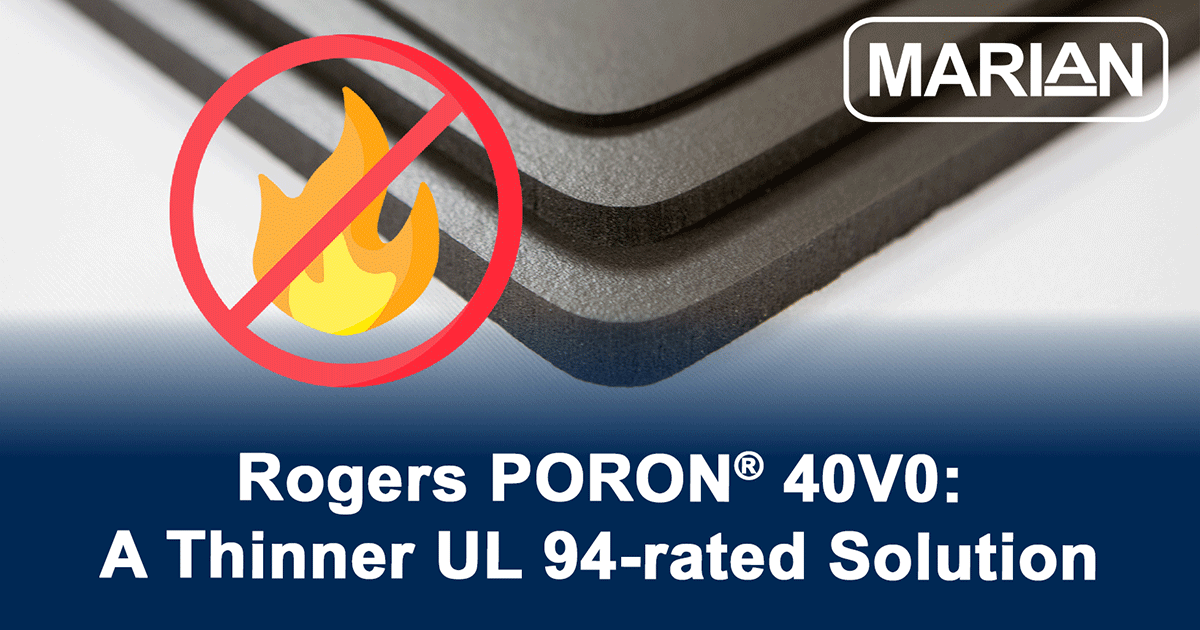
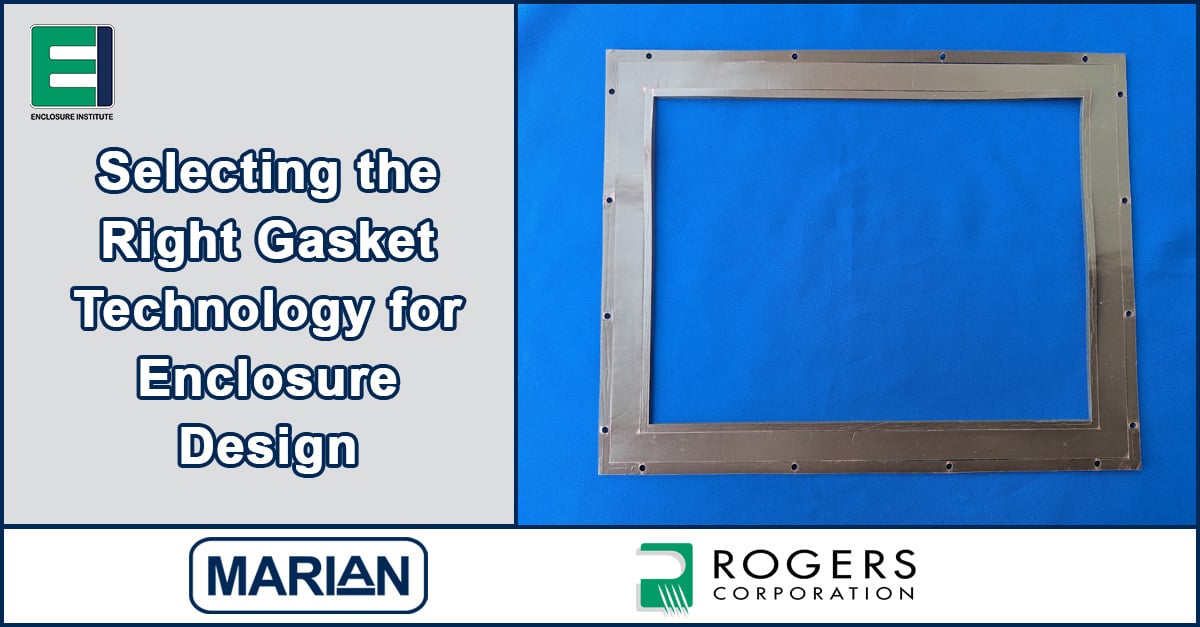


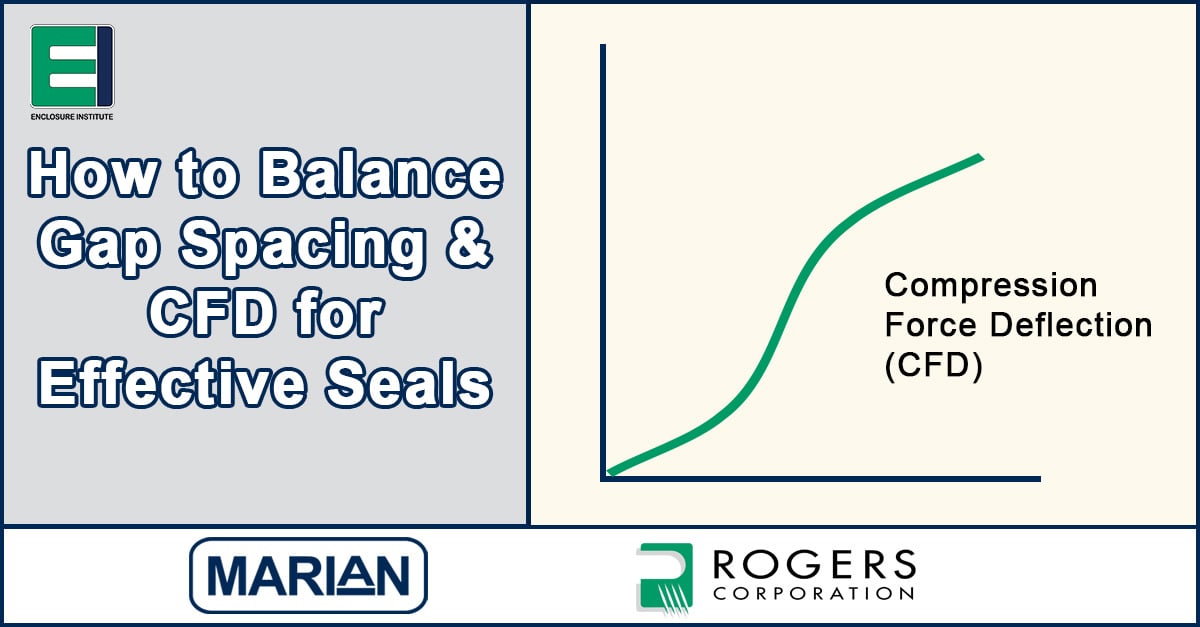
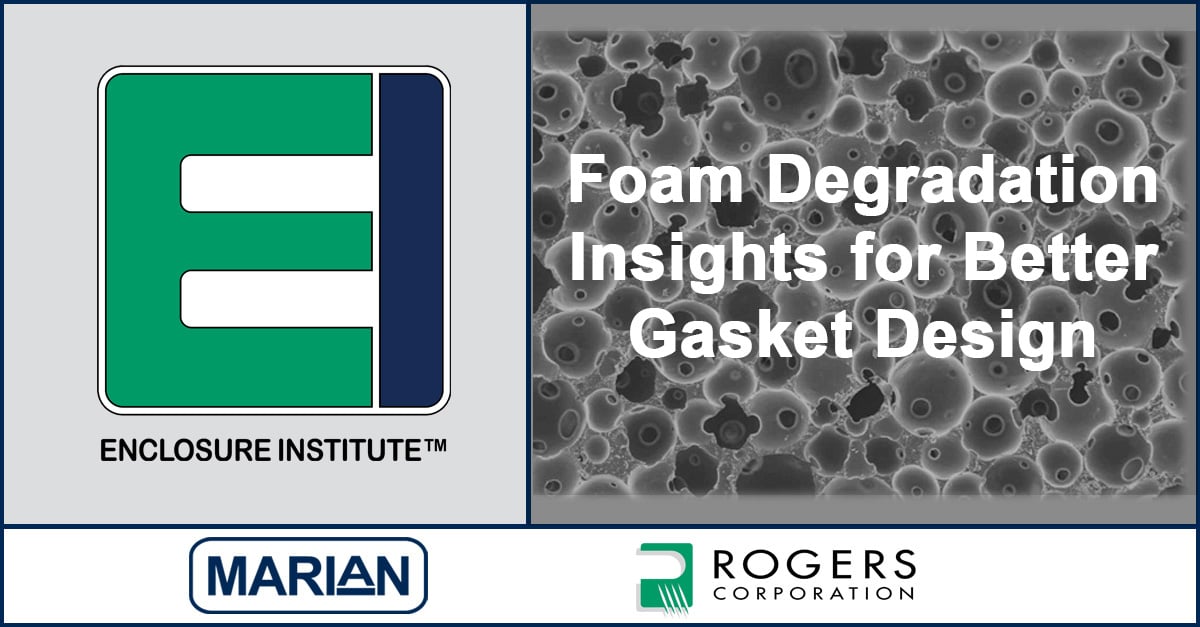
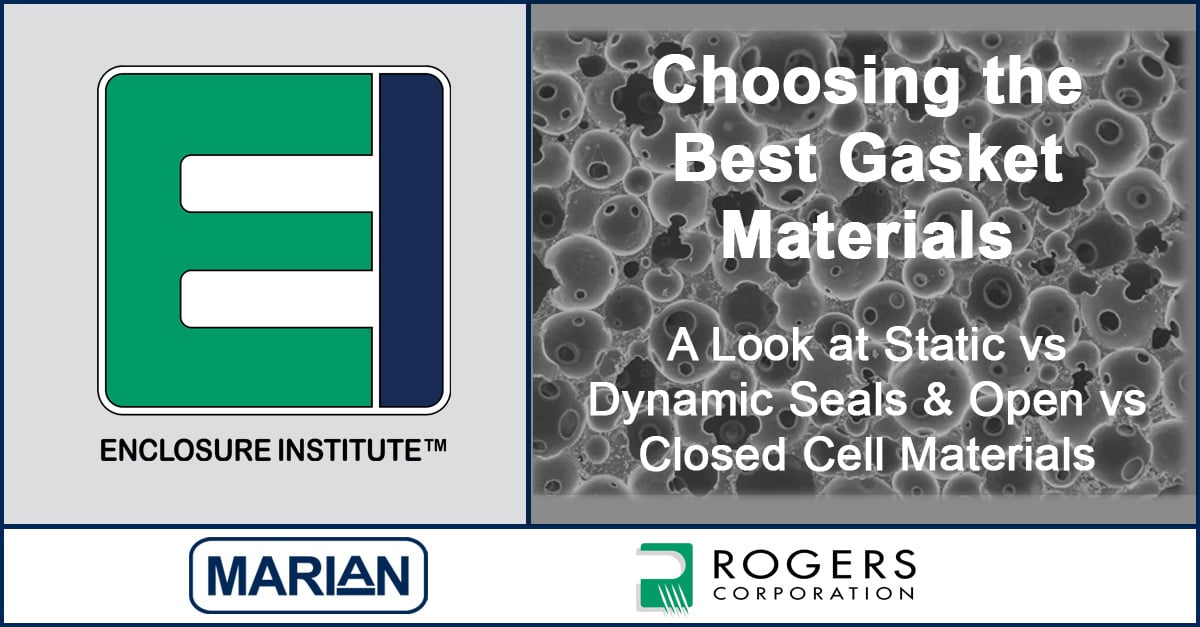
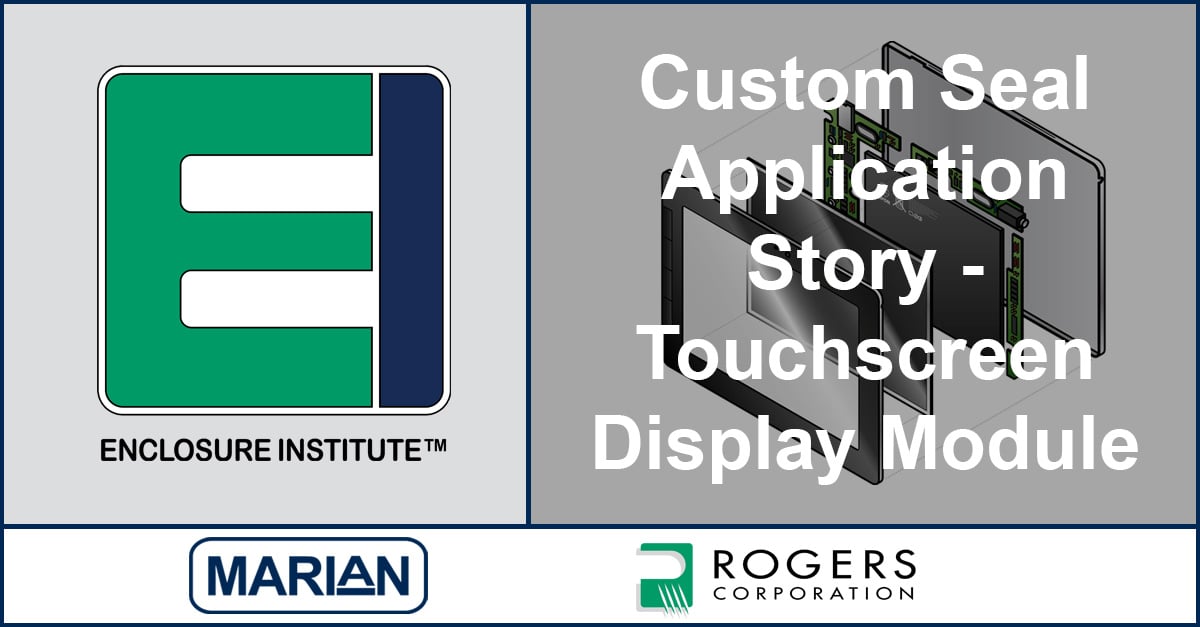

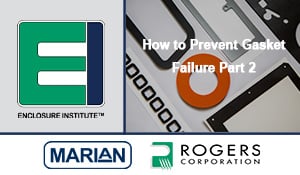

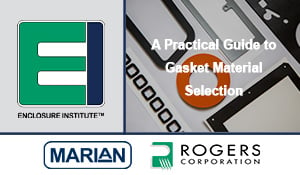
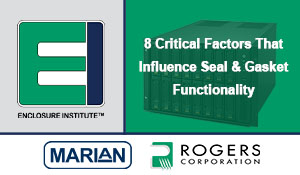
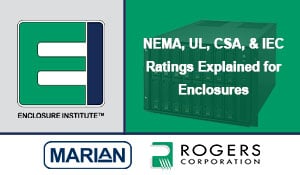
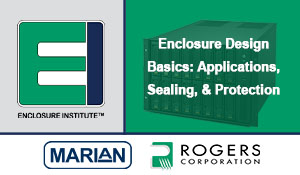

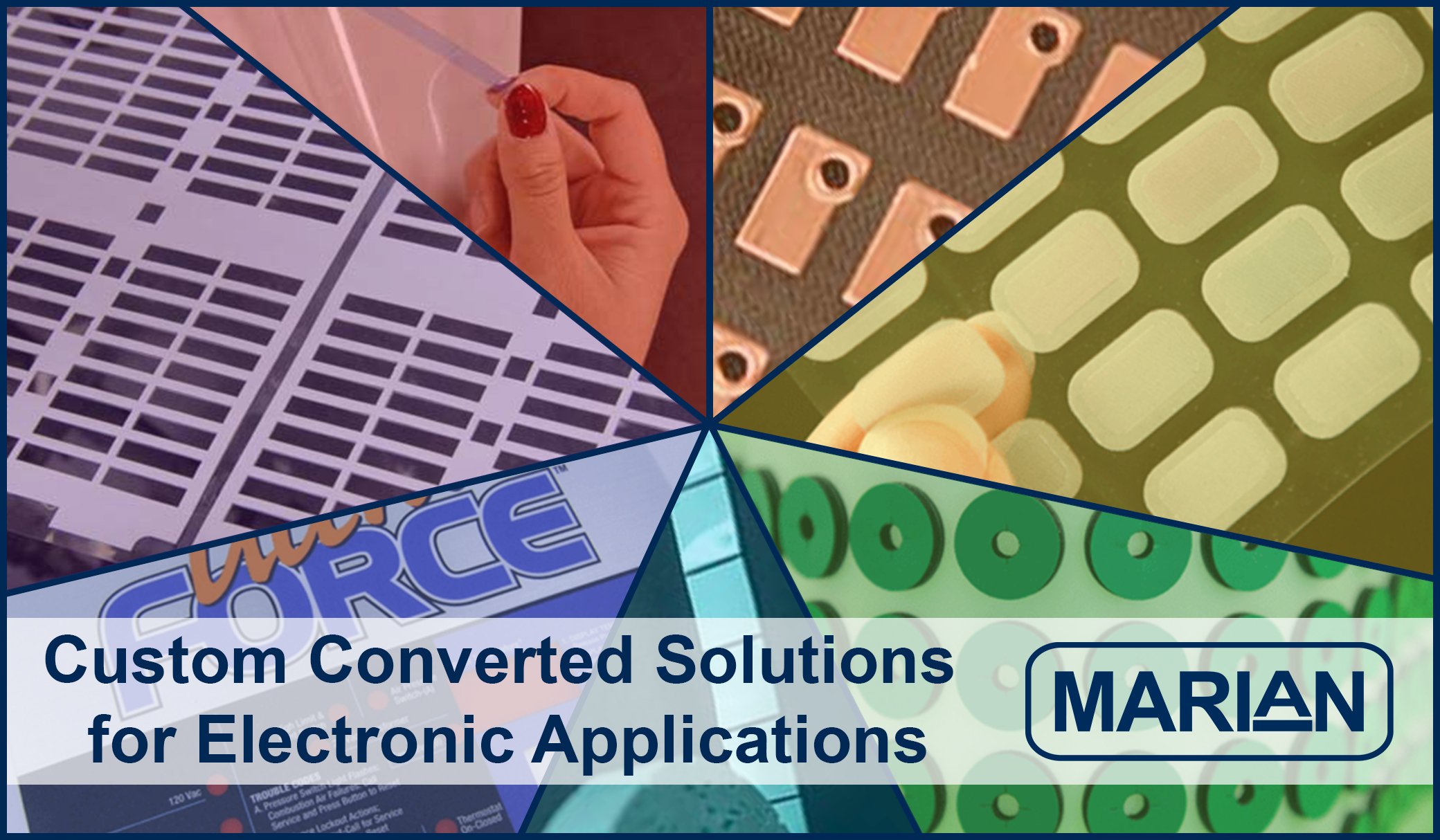


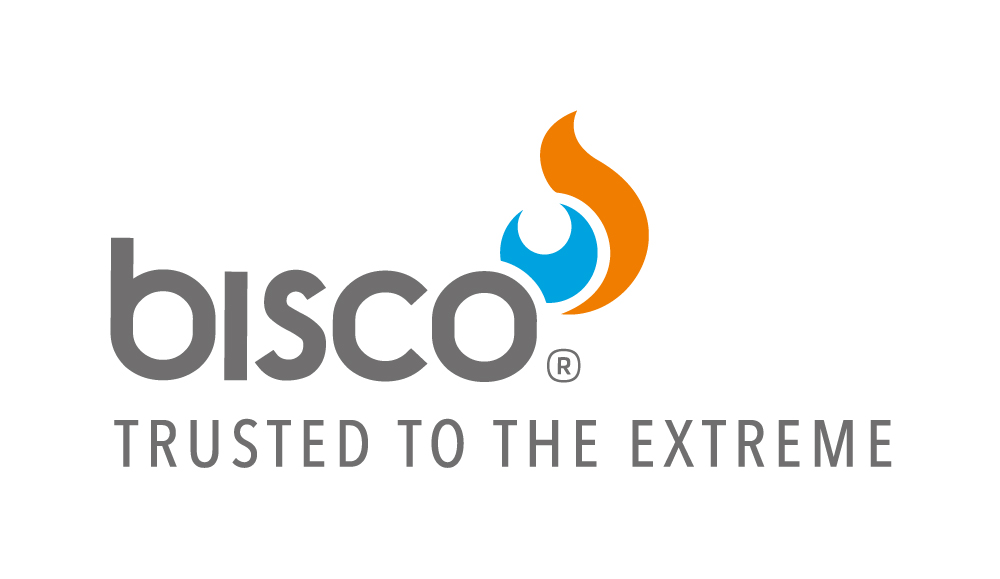




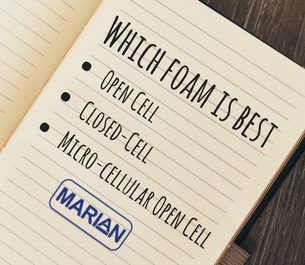

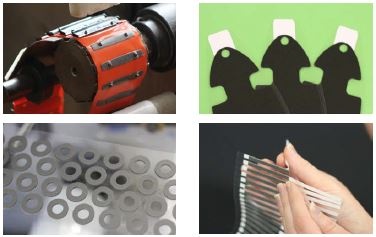
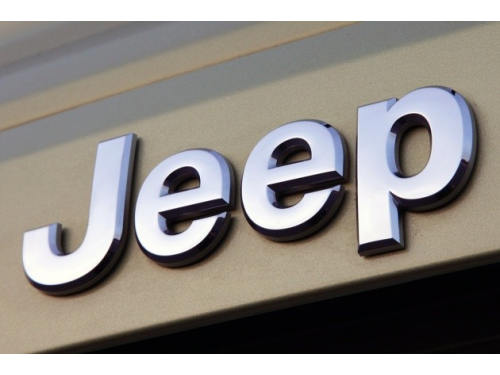
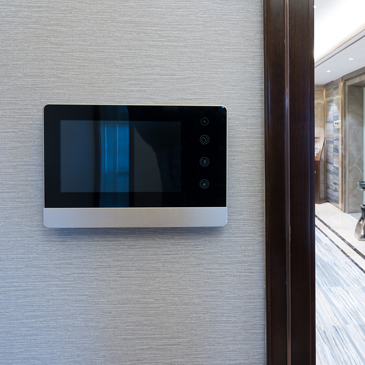
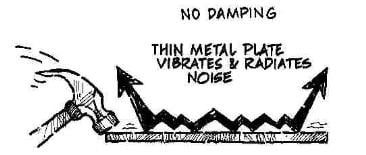
.png)




